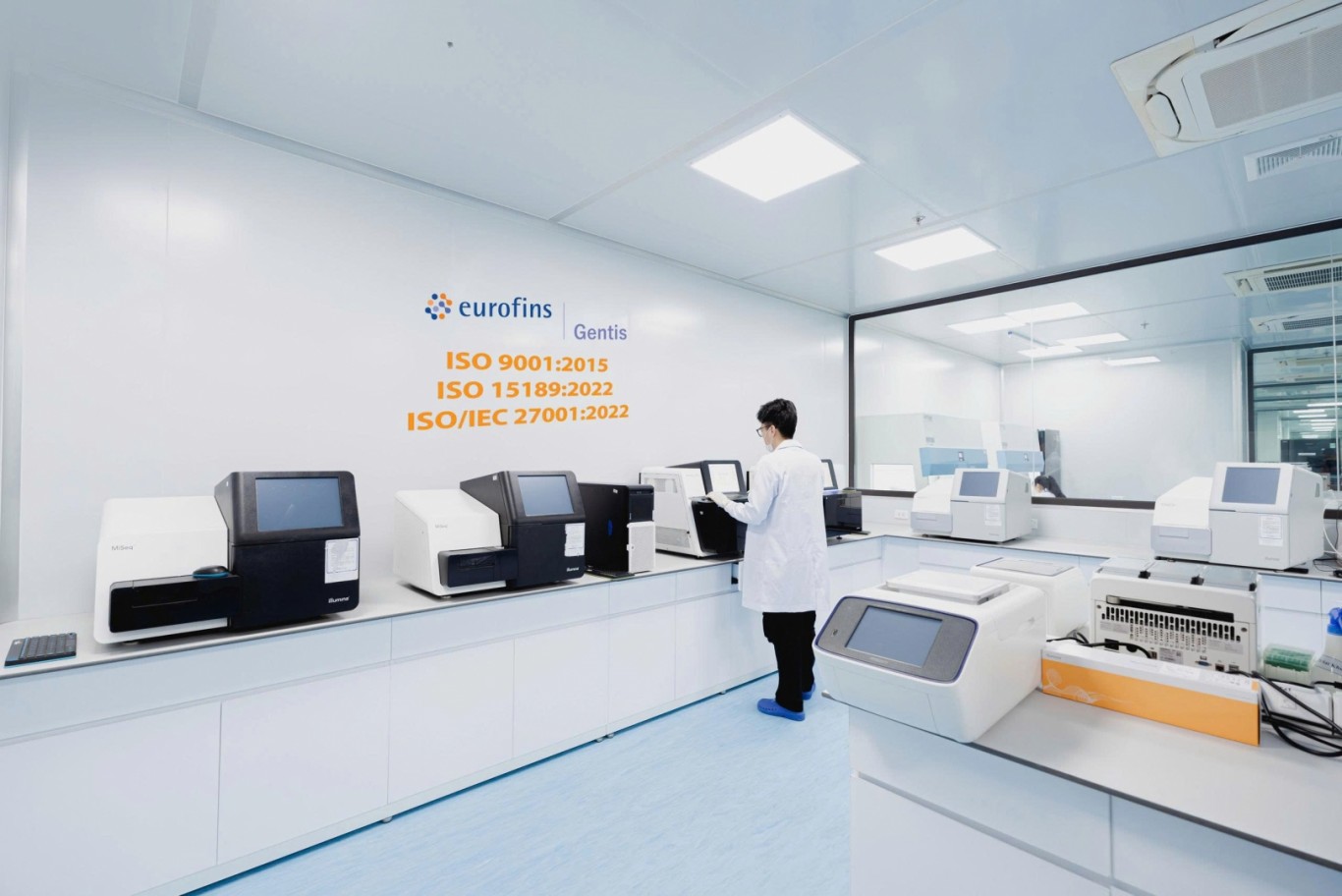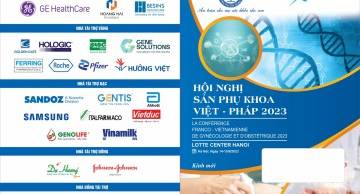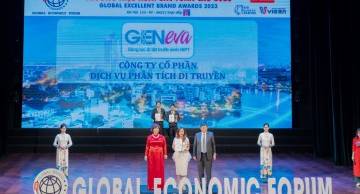-
- 1800 2010
- EN

News
Array
(
[0] => stdClass Object
(
[id] => 1122
[id_crawler] =>
[category_product] => NULL
[thumbnail] => ht-sk_2023/ht-sk_t8-2023/ivt_expert_quang_ninh/ivf_quang_ninh_2023-2.jpg
[album] =>
[url_video] =>
[is_status] => 1
[is_featured] => 0
[is_form] => 0
[displayed_time] => 2023-08-15
[program] => 0
[number] => 1
[viewed] => 0
[type] =>
[type_career] =>
[level] =>
[address] =>
[address_career] =>
[expiration_time] => 0000-00-00
[created_time] => 2023-08-15 14:47:21
[updated_time] => 2024-08-15 15:31:01
[files] =>
[salary] =>
[time] =>
[created_by] => 62
[is_table_content] => 1
[language_code] => en
[slug] => gentis-participated-in-the-annual-scientific-conference-ivf-experts-meeting-18
[title] => GENTIS participated in the annual scientific conference IVF Experts Meeting 18
[description] => On August 11 – 12, 2022, GENTIS participated in the 18th Annual scientific conference IVF Experts Meeting organized by the Ho Chi Minh City Society for Reproductive Medicine (Hosrem) at the FLC Grand Hotel Ha Long - Ha Long City, Quang Ninh Province.
[content] => IVF Experts Meeting is the most important and annual scientific conference in the field of assisted reproduction in Vietnam, held regularly every year, from 2005 to now. This is a reliable conference for experts, doctors, technicians, medical staff, and people working in the field of assisted reproduction to exchange, learn, improve specialized knowledge and experiences, making an important contribution to the development of Vietnam's assisted reproductive industry.

The IVF Experts Meeting conference attracted the attention of more than 500 medical doctors and experts.
This year's 18th IVF Experts Meeting conference chaired by Prof. Nguyen Thi Ngoc Phuong, M.D (Chairman of HOSREM) took place successfully, with the participation of more than 500 delegates from testing centers, IVF centers and assisted reproduction hospitals across the country. They are doctors, lab specialists, embryologists and leading experts in the field of obstetrics and gynecology across the country.
As a pioneering testing center in the field of genetic analysis, providing a full ecosystem of tests in the field of assisted reproduction, representatives of the Board of Directors of GENTIS also attended the IVF Experts Meeting 18. Leading the delegation of GENTIS was:
- Mr. Do Manh Ha (General Director of GENTIS Company)
- Pham Dinh Minh, PhD. (R&D Director of GENTIS Company)
- Nguyen Quang Vinh, M.Sc. (Director of Laboratory center of GENTIS Company)
- Mr. Hoang Dinh Khiem (Business Director of GENTIS Company)
- Ms. Dam Anh Ngoc (Marketing Manager of GENTIS Company)
- Hoang Thi Nhung, M.Sc. (R&D Specialist, GENTIS Company)
The main conference took place on August 12, 2023, including 4 sessions with a total of 20 thematic reports, research documents, and discussions,... and 7 poster reports of leading experts in the field of assisted reproduction in the country. Many questions were asked and exchanged directly and enthusiastically with leading experts in the field of assisted reproduction.

Hoang Thi Thanh Thuy, M.D., reported on the topic: "The role of the FSHR variants in assisted reproduction"
GENTIS was proud to provide data to share knowledge, technology solutions, and medical tests for experts in the field of assisted reproduction such as:
- The role of the FSHR variant in assisted reproduction - Hoang Thi Thanh Thuy, M.D. (Hanoi Medical University; National Assisted Reproductive Center)
- Sperm DNA fragmentation: from research to application - Assoc. Prof. Dr. Le Minh Tam (Hue University of Medicine and Pharmacy)
With these attractive reports, GENTIS is confident to bring many tests and clinical applications to doctors specializing in assisted reproduction. Through the topics, presentations, and scientific publications shared in the IVF Experts Meeting, Mr. Do Manh Ha (General Director of GENTIS) assessed: "This is a good opportunity for GENTIS to obtain feedback and come up with new orientations in researching, updating, and developing the latest test, medical technology and techniques for assisted reproduction in the near future".

Assoc. Prof. Dr. Le Minh Tam reported on the topic: "Sperm DNA fragmentation: from research to application"
Attending IVF Experts Meeting 18 conference was not only an opportunity for GENTIS to update the most advanced information, knowledge and technology in the field of assisted reproduction, but also an opportunity to meet, exchange, hone and learn from experts. Thereby, we can apply the most modern knowledge to improve the quality of testing at GENTIS to help infertile couples "find their beloved healthy baby".
[content_more] => [meta_title] => GENTIS participated in the annual scientific conference IVF Experts Meeting 18 [meta_description] => On August 11 – 12, 2022, GENTIS participated in the 18th Annual scientific conference IVF Experts Meeting organized by the Ho Chi Minh City Society for Reproductive Medicine (Hosrem) at the FLC Grand Hotel Ha Long - Ha Long City, Quang Ninh Province. [meta_keyword] => [thumbnail_alt] => [post_id] => 1122 [category_id] => 4 ) [1] => stdClass Object ( [id] => 1119 [id_crawler] => [category_product] => NULL [thumbnail] => 5-compressed.jpg [album] => [url_video] => [is_status] => 1 [is_featured] => 0 [is_form] => 1 [displayed_time] => 2023-08-10 [program] => 0 [number] => 1 [viewed] => 0 [type] => [type_career] => [level] => [address] => [address_career] => [expiration_time] => 0000-00-00 [created_time] => 2023-08-10 09:40:31 [updated_time] => 2024-08-15 15:23:04 [files] => [salary] => [time] => [created_by] => 63 [is_table_content] => 1 [language_code] => en [slug] => pgtest-advanced-embryo-screening-technique-for-healthy-babies [title] => PGTest - Advanced Embryo Screening Technique for Healthy Babies [description] => Having a healthy pregnancy and giving birth to healthy children may seem straightforward for most couples, but in reality, not everyone is so fortunate. With modern medical advancements, in vitro fertilization (IVF) combined with preimplantation genetic testing (PGTest) can help infertile couples select healthy embryos without any genetic disorders before transferring them to the maternal uterus. This allows couples with hereditary genetic disorders to have healthy children and eliminates the risk of genetic diseases in future generations. [content] =>1. What is Preimplantation Genetic Testing (PGTest)?
According to the Ministry of Health, the infertility rate among Vietnamese families tends to rise increasingly, accounting for about 10-12% of couples of reproductive age. Therefore, IVF has become a crucial method to help infertile families conceive and have healthy children.
For a successful IVF treatment, PGTest - pre-implantation genetic analysis is one of the decisive factors with significant benefits. Approximately 80% of successful IVF cycles are related to embryo quality, making PGTest a “lifesaver” for cases of implantation failure and recurrent miscarriages.

Pre-implantation genetic testing (PGT) is a test performed to analyze DNA from egg cells (polar bodies) or embryos (cleavage stage - morula or blastocyst stage) to identify HLA or genetic abnormalities. PGTest provides genetic health information about the embryos, helping fertility specialists select the best embryos for transfer, thus improving the chances of a successful pregnancy.
This technique increases the likelihood of conception , reduces miscarriage rates and multiple pregnancy risks, lowers the risk of single-gene disorders in the newborn, increases embryo survival rates, reduces the number of IVF cycles needed to achieve pregnancy, and saves time and costs for IVF treatments. As a result, PGTest is widely used in the field of reproductive assistance, particularly for couples undergoing IVF or intracytoplasmic sperm injection (IVF/ICSI).
2. Common Types of PGTest
Preimplantation genetic testing is divided into three main categories:
2.1. PGT- A (Preimplantation Genetic Screening for Aneuploidy)
PGT-A is a genetic test that detects chromosomal abnormalities in embryos before transferring them to the maternal uterus. It is indicated for:
- Advanced maternal age: 35 years old and above
- Multiple failed IVF attempts or recurrent miscarriages
- Family history of children born with chromosomal abnormalities
- Severe male infertility (AZF microdeletion)
2.2. PGT-SR (Preimplantation Genetic testing for structural chromosomal rearrangements)
PGT-SR is a genetic test that detects structural chromosomal abnormalities. It is indicated for couples where one partner carries structural chromosomal abnormalities such as balanced translocations, Robertsonian translocations, chromosomal deletions or duplications, or Angelman syndrome.
2.3. PGT-M (Preimplantation genetic testing for monogenic/single gene defects)
PGT-M is a preimplantation genetic testing for single-gene disorders. It is indicated for couples carrying gene mutations causing diseases like Thalassemia, spinal muscular atrophy, and cystic fibrosis, or for women carrying X-linked gene mutations (e.g., Hemophilia, Duchenne/Becker muscular dystrophy). Embryos screened by PGT-M without inherited disorders are prioritized for transfer to the maternal uterus to eliminate single-gene disorders in future generations.
3. PGTest Packages at GENTIS
Currently, GENTIS offers three PGTest kits: PGTest (PGT-A/SR), PGTest-M, and PGT Max 1 in order to help select embryos without chromosomal abnormalities and optimize embryo selection before transfer to the maternal uterus. GENTIS has also launched PGT Max 1 – a breakthrough test from PGTest with exclusive improvements unmatched by any other facility in Vietnam.

3.1. PGTest - A/SR
Analyzes DNA to detect aneuploidy in all 23 or 24 chromosome pairs and structural abnormalities (additions, deletions >5Mb)
- Method: Veriseq PGS – Illumina, USA. High resolution with over 3,000 data points; 100% sensitivity; 99.98% specificity; >1,000,000 total reads/sample, capable of detecting additions and deletions >5Mb
- Technology: Illumina Next-Generation Sequencing (NGS) – USA
- BlueFuse analytic software can identify over 130 syndromes related to chromosomal additions and deletions
- Sample: Embryo cells (day 3-5)
Note: Cannot detect balanced translocations
3.2. PGTest-M
Analyzes DNA to identify single-gene mutations in embryos related to diseases such as Thalassemia, Duchenne muscular dystrophy, hemophilia, RETT syndrome, etc.
- Method: SNP and STR analysis to detect inherited single-gene mutations from parents to embryos
- Technology: CE-Thermo, NGS Illumina – USA
- Sample: Embryo cells (day 3-5)
3.3. PGT Max-1
In addition to analyzing DNA for numerical and structural abnormalities across all 24 chromosomes and common syndromes caused by mutations >5Mb, PGT Max 1 can also detect two common microdeletions as small as 2Mb including 22q11.2 deletion (related to DiGeorge syndrome) and 1p36 deletion (related to 1p36 deletion syndrome).
- Method: Next-generation sequencing (NGS) (Illumina) and analysis of sequencing results using specialized bioinformatics software to identify aneuploidy in all 24 chromosomes and chromosomal additions/deletions
- Technology: Illumina NGS technology – USA and specialized analysis software
- Sample: Day 5 embryo biopsy
4. PGTest Procedure at GENTIS

To ensure success and collaboration with IVF centers nationwide, PGTest at GENTIS follows a strict protocol to guarantee accuracy in the results. The process requires close coordination between the assisted reproduction unit and GENTIS International Laboratory from sample collection to preservation and transportation:
- Step 1: IVF is performed, and embryos are cultured in an embryo culture medium.
- Step 2: Embryo biopsy on day 3 or day 5, collecting a small number of cells – a crucial technique requiring precision and skill from the doctor.
- Step 3: Biopsied embryo cells are sent to GENTIS International Laboratory for analysis.
- Step 4: Embryos with normal results are selected for transfer. The remaining normal embryos are frozen for future use.
5. Why Choose PGTest at GENTIS?
Currently, PGTest can be performed at some specialized hospitals or assisted reproduction centers in Vietnam, but GENTIS is one of the few pioneering units capable of performing PGTest accurately and professionally using the most advanced technology and a team of top experts. GENTIS uses a complete next-generation sequencing system, chemicals, and analysis software from Illumina - USA. Globally, 80% of facilities use Illumina systems, with numerous scientific publications on accuracy, high resolution, and detection of small-scale disorders.
Moreover, Illumina's result turnaround time is much faster than other brands like PG-Seq, Chromint (China), etc. GENTIS's use of Illumina equipment provides a significant advantage over other units in supporting doctors and couples in having healthy children.
Furthermore, GENTIS continuously strives to improve service quality, applying the most advanced testing technologies and techniques to provide customers with comprehensive solutions. This contributes to enhancing human healthcare and protection. Through PGTest, GENTIS aims to bring happiness to infertile families across the country.
The annual VUNA scientific conference is one of the important forums, attracting the attention of experts in the fields of urology, nephrology, andrology, renal transplantation, dialysis, and pediatrics. The conference is organized annually by the Vietnam Urology - Nephrology Association. The purpose of the VUNA Conference is to create conditions for experts, doctors, and nurses in the fields of urology, nephrology, andrology, renal transplantation, dialysis, and pediatrics to exchange and update knowledge, experiences to improve treatment quality at centers and hospitals across the country.

Assoc. Prof. Dr. Nguyen Quang (President of the Vietnamese Society for Sexual Medicine) and Dr. Mai Ba Tien Dung (Head of Andrology Department - Binh Dan Hospital, HCMC)
This year's 17th annual VUNA scientific conference focused on the following topics:
- New advances in the diagnosis and treatment of urological, nephrological, andrological diseases and renal transplantation
- Minimally invasive surgery in urology and nephrology (PNCL, laparoscopy, ROBO, LASER, Bipolar, ThuLEP)
The VUNA 2023 Conference attracted more than 1,000 delegates from hospitals and testing centers across the country and around the world. Within the framework of the conference, 165 reports were presented by leading domestic and international experts with in-depth professional content on nephrology, urology, andrology, renal transplantation, dialysis, and pediatrics.

Andrology Session 1 (VUNA Conference) concluded successfully with a lot of useful and practical information.
The Associate Professor said that although factors from the male account for 40-50% of infertile couples, and are on the rise, men are the least investigated and treated group in infertility. Therefore, identifying the cause of male infertility is extremely important and urgent.
Currently, in addition to the basic tests in the diagnosis and treatment of male infertility, more in-depth tests, especially the influence of genetic factors, are increasingly being interested in. Thanks to that, doctors can determine the cause of male infertility, make accurate diagnoses and personalize treatment to achieve high efficiency for each patient.
The presentation was highly appreciated for its high quality, thorough investment and received enthusiastic discussion from the delegates attending the Conference. In addition, GENTIS's Andrology tests presented by Assoc. Prof. Dr. Nguyen Quang in the presentation were of great interest to doctors and delegates because of their important role in screening, diagnosing, and treating male infertility.
Especially, sperm DNA fragmentation test, Karyotype, AZF microdeletions, Antisperm antibody (ASA), CFTR gene mutation, STDs - sexually transmitted diseases: 12 agents, Sperm aneuploidy (SAA), In-depth genetic analysis (Fertiscan).

Andrology Session 1 (VUNA Conference) concluded successfully with a lot of useful and practical information.
As a pioneer in the field of genetic analysis, GENTIS was honored to participate in this 17th VUNA Annual Scientific Conference. Hopefully, GENTIS's comprehensive Andrology testing ecosystem will be helpful for domestic and international experts and doctors in diagnosing and treating diseases related to the field of andrology, in order to improve opportunities for better care for men's health in the future.
The 17th VUNA Scientific Conference was successfully held. The event has helped doctors and experts exchange and equip themselves with specialized knowledge and professional experience in the fields of nephrology, urology, andrology, dialysis, renal transplantation, and pediatrics. Once again, GENTIS congratulates the conference on its resounding success.
This is the most important and anticipated event of the year of the National Hospital of Obstetrics and Gynecology. Especially this year, PSTU Hospital in collaboration with the French Society of Obstetrics and Gynecology (CNGOF) organizes many interesting programs such as CME, scientific conferences, international cooperation... The conference is an opportunity for domestic experts. and international students to exchange and share clinical and paraclinical experiences as well as update new knowledge in obstetrics, gynecology, neonatology, assisted reproduction, fetal medicine, pharmacy,...

GENTIS is honored to continue to accompany the Vietnam - France Congress of Obstetrics and Gynecology 2023 and bring meaningful activities on the official conference day (August 15, 2023) such as:
1. GENTIS is honored to provide data for experts in in-depth reports:
- Poor ovarian response - Assoc. Prof. Dr. Ho Sy Hung (Deputy Director of the National Center for HTSS) in the time frame: 11am - 11:30am on August 15.
- The significance of NIPT test in the management of multiple pregnancy - MSc.BS. Nguyen Viet Quang (Director of National Center for Reproductive Medicine - Central Hospital) in the time frame: 16h30 - 16h50 on August 15
Newborn screening for hemoglobin disease - Dr. Tran Thi Chi Mai (Head of Department of Biochemistry, National Children's Hospital - Hanoi Medical University) in the time frame: 16h - 16h20 on August 15
2. GENTIS booth will have genetic testing counseling activities; organize many games, lucky spins with a chance to win 100% gifts for delegates and doctors… in the time frame: 7:30 am - 5:00 pm







We cordially invite you and your doctor to attend!
[content_more] => [meta_title] => [meta_description] => [meta_keyword] => [thumbnail_alt] => [post_id] => 1115 [category_id] => 4 ) [4] => stdClass Object ( [id] => 1114 [id_crawler] => [category_product] => NULL [thumbnail] => z4541907198424_abb2a5ef3abd0d700f784f3e8529515e.jpg [album] => [url_video] => [is_status] => 1 [is_featured] => 0 [is_form] => 0 [displayed_time] => 2023-07-24 [program] => 0 [number] => 1 [viewed] => 0 [type] => [type_career] => [level] => [address] => [address_career] => [expiration_time] => 0000-00-00 [created_time] => 2023-07-24 10:40:49 [updated_time] => 2023-08-22 13:54:14 [files] => [salary] => [time] => [created_by] => 63 [is_table_content] => 1 [language_code] => en [slug] => geneva-duoc-vinh-danh-top-3-san-pham-dich-vu-chat-luong-toan-cau-2023 [title] => GenEva was honored with Top 3 global quality products and services in 2023 [description] => On the morning of July 23, 2023, GENTIS' GenEva high-end prenatal screening test was honored to receive the award of Top 3 GLOBAL QUALITY PRODUCTS - SERVICES 2023. [content] =>Top 3 Global Quality Products and Services 2023 is a prestigious award held annually with the participation of quality products and services of leading companies and units in Vietnam. The goal is to honor good products and services for consumers. To achieve this award, products and services must meet all quality standards and bring value to society.

GenEva premium prenatal screening test was introduced to the market by GENTIS in 2020, bringing top quality products in the field of obstetrics. GenEva combines next-generation sequencing and a proprietary CE-IVD-certified algorithm that is capable of detecting fetal abnormalities even in cases where the amount of free fetal DNA in the mother's blood is at low levels. low (>1.4%). This results in the lowest technical failure rate (0.1%) and eliminates unnecessary invasive testing like other NIPTs.

With 13 years of experience in genetic analysis, GENTIS has analyzed more than 500,000 samples, serving hundreds of thousands of customers each year. As a partner of prestigious medical organizations in Vietnam, GENTIS continuously cooperates with good medical experts and has a team of highly trained, enthusiastic and dedicated consultants. With 2 large-scale and modern laboratories in Hanoi and Ho Chi Minh City, GENTIS is ready to serve customers and partners.
GENTIS is also a unit in Vietnam that meets ISO 15189: 2012 standard on laboratory quality management for NIPT (GenEva). Moreover, the NIPT test at GENTIS also meets the GenQA international standard.
Not only that, GENTIS is transferred with new generation gene sequencing (NGS) technology, the NextSeq 550 machine has high resolution with more than 20 million readings of samples. GENTIS GenEva test results are quite accurate, up to 99.9%. With modern and advanced technology, medical machinery and a team of doctors and experts trained abroad, GENTIS brings the best quality GenEva premium prenatal screening test.
GenEva is a reliable, non-invasive prenatal screening test that is widely accepted and appreciated by experts. With advantages such as safety for pregnant women and fetuses, easy implementation, high accuracy and speed, GenEva will be a useful test for pregnant women.

The award "Top 3 global quality products and services 2023" is a recognition and encouragement for GenEva to continue to improve day by day to best serve the needs of customers and partners. GENTIS is committed to the quality of high-end prenatal screening tests GenEva in particular and genetic analysis tests in general will be further improved.
[content_more] => [meta_title] => [meta_description] => [meta_keyword] => [thumbnail_alt] => [post_id] => 1114 [category_id] => 4 ) [5] => stdClass Object ( [id] => 1113 [id_crawler] => [category_product] => NULL [thumbnail] => trilv-110.jpg [album] => [url_video] => [is_status] => 1 [is_featured] => 0 [is_form] => 0 [displayed_time] => 2023-07-22 [program] => 0 [number] => 1 [viewed] => 0 [type] => [type_career] => [level] => [address] => [address_career] => [expiration_time] => 0000-00-00 [created_time] => 2023-07-24 10:14:19 [updated_time] => 2023-08-22 14:26:11 [files] => [salary] => [time] => [created_by] => 63 [is_table_content] => 1 [language_code] => en [slug] => gentis-bao-cao-tai-hoi-nghi-khoa-hoc-toan-quoc-nam-2023-hoi-y-hoc-gioi-tinh-viet-nam [title] => GENTIS reports at the 2023 National Scientific Conference - Vietnam Association of Sex Medicine [description] => On the afternoon of July 21, 2023, at the 2023 National Scientific Conference of the Vietnam Association of Sex Medicine with the theme: "VSSM - Sexual health care - multi-dimensional approach", Dr. R&D Director of GENTIS) and Assoc. Prof. Dr. Nguyen Quang (Chairman of the Society of Sex Medicine) had a report at session 4 – PROGRESS IN SEXUAL HEALTH”. The conference took place in 2 days from 21 to 22 July 2023 with 2 parts: Conference program and continuous medical training program. [content] =>
The 2023 National Scientific Conference - Vietnam Association of Sex Medicine attracts the participation of more than 300 delegates
National scientific conference in 2023 - Vietnam Association of Sex Medicine with the participation of Assoc. Prof. Dr. Nguyen Quang - President of Vietnam Association of Sex Medicine; Assoc. Prof. Dr. Doan Minh Thuy - Vice President of General Secretary of Vietnam Association of Sex Medicine, Assoc. About 300 delegates are active in the field of sex medicine from major domestic and international hospitals and centers.
At the conference, the rapporteurs in turn presented the latest research results and achievements related to sexual health care for both men and women. After each reporting session, there are speakers, experts and delegates to discuss and exchange experiences in the field of Sex Medicine and Reproductive Health.

Assoc.Prof.Dr. Nguyen Quang (Chairman of the Society of Sex Medicine) and Assoc.
On the side of GENTIS, Dr. Pham Dinh Minh (R&D Director) gave a detailed presentation on the topic "Gene testing in screening & diagnosis of abnormal sex development" before the whole conference. Specifically, Dr. Minh said, sex differentiation starts from the 6th week of pregnancy, starts with the activity of the SRY gene (sex determining region Y), followed by a sequence of activities and mutual regulation of the series. related genes: SOX9, FOXL2, WNT4, RSPO1, DAX1… and extragenomic factors.
Dr. Pham Dinh Minh (R&D Director) reported on the topic "Gene testing in screening & diagnosis of abnormal sex development" before the whole conference.
Disturbances at any stage of the sexual differentiation process in the embryonic period can affect the development of the reproductive organs, development (physical, physiological, mental) menstruation) and reproduction. Therefore, genetic testing is very important to confirm the diagnosis and find the specific cause of the disorder of sex development.
In addition, Dr. Minh also provided to the conference a number of genetic and genetic tests at GENTIS that have been implemented and developed to assist doctors in the diagnosis and assessment of risk factors, thereby helping treatment orientation for each patient such as PGT, NIPT, Karyotype, WES/WGS,... The report of Dr. Pham Dinh Minh received a lot of attention from delegates present at the conference because of its acuteness. Essential and practical in screening and diagnosis of abnormal sex development today.
The 2023 National Scientific Conference - Vietnam Association of Sex Medicine is an opportunity for delegates to connect and cooperate to develop new, in-depth and related research ideas. Once again, GENTIS would like to congratulate the Conference on a great success!
1. What is FSH hormone?
.jpg)
FSH (Folicle Stimulating Hormone) is a hormone released from the anterior pituitary gland in the brain. FSH stimulates the development of immature oocytes.
At the beginning of development, the oocyte releases estradiol, which in turn acts on the hypothalamus and pituitary gland to increase the release of GnRH and LH, promoting ovulation. Before ovulation, FSH levels peak, stimulating the ovaries and causing ovulation. Once ovulation has occurred, FSH levels return to baseline or drop slightly below normal.
2. Significance of FSH receptor gene polymorphism test in assisted reproduction
The FSH receptor gene polymorphism test is a test that allows the identification of genetic variants associated with the response to ovarian stimulation. The aim is to produce good quality embryos and increase pregnancy rates in IVF.
.jpg)
When ovarian stimulation is performed, depending on the response of the ovaries, the results can be classified into 4 main groups:
• Poor responder according to Bologna criteria: 3 oocytes obtained
• Sub-optimal responder: 4 to 9 oocytes obtained
• Normal responder: 10 to 15 oocytes are obtained
• Hyper-responder: ≥ 15 oocytes obtained
Therefore, the identification and classification of patients is the key to choosing the correct treatment strategy. Currently, poor response to ovarian stimulation is a matter of great concern because this is a very difficult patient group to treat in IVF.
In addition to the problems of ovarian reserve factors such as AFC secondary follicles, AMH hormones, body mass index (BMI), age of the patient, etc., many studies show that FSH receptor gene polymorphisms associated with poor ovarian response.
In Vietnam, FSH receptor gene polymorphism testing is still relatively new. However, in the world, there have been many studies showing that some FSH receptor gene polymorphisms make the amount of drugs that patients need to take more. The four SNPs that have been shown to be associated with poor ovarian response are rs6165, rs6166, rs1394205, rs10835638.
FSH receptor gene polymorphism testing will be a promising and necessary option for individualizing ovarian stimulation and obtaining optimal egg numbers for treatments.
.jpg)
If the patient is a carrier of the FSH receptor gene polymorphism associated with poor ovarian response, the dose of the drug will need to be increased in order to obtain the optimal number of eggs. Like this, the patient will have to stimulate more times, which means an increase in treatment costs. Therefore, we should screen at the beginning to classify the patient into which group.
The FSH receptor gene polymorphism test has been studied and proven to be associated with poor ovarian response, and supports physicians in individualizing and optimizing ovarian stimulation regimens. By performing the FSH receptor gene polymorphism test, the doctor will provide an optimal and personalized ovarian stimulation regimen for each patient, as well as assist in determining the cause of the poor ovarian response. (POR).
It can be seen that performing FSH receptor polymorphism testing is extremely important for women who are about to undergo ovarian stimulation. By performing this test, the doctor will come up with an effective treatment plan, helping infertility cases save time and costs as well as soon "harvest the sweet fruit".
(NIPT - Non - Invasive Prenatal Test) is a non-invasive prenatal screening test that helps to detect syndromes related to chromosomal abnormalities in the fetus through maternal blood such as Down syndrome, Edwards, Patau, any usually the number of sex chromosomes X, Y, mutations, deletion/repetition, etc. ensure safety and accuracy over 99%.
External control is a mandatory program that laboratories must participate in to evaluate the quality of test results. This is not only to meet the requirements of state management agencies and certification organizations, but also for the laboratory to confirm the quality of test results with customers.
GENTIS is one of the few specialized testing centers in Vietnam that owns and masters America's new generation of gene sequencing technology. Therefore, the NIPT tests at GENTIS have faster, more accurate and more specific results for the Vietnamese population.

ESPECIALY, GENTIS international laboratory system always surpasses many strict quality standards both at home and abroad:
• Obtained ISO 15189:2012 certification for the quality and capacity of medical laboratories.
• Reaching the quality of the UK's GenQA international standard.
In particular, more than 100 major partners and 700 long-term customers of GENTIS are major hospitals in Vietnam such as: Central Obstetrics and Gynecology Hospital, Hanoi Obstetrics and Gynecology Hospital, Hanoi Cancer Hospital, Bach Mai Hospital, etc. Not only that, GENTIS is also a research partner with prestigious medical units such as Hanoi Hospital of Andrology and Fertility, National Hospital of Obstetrics and Gynecology, Military Institute of Clinical Embryology, Hung Vuong Hospital, etc. to publish many quality scientific articles in prestigious journals.
Thanks to pioneering technology and owning a system of specialized laboratories for genetics, GENTIS's NIPT test affirms its quality, reliability and high accuracy of up to 99.9%. With 13 years of operation in the market, GENTIS International Testing Center is a reliable address providing prenatal screening services that many pregnant women trust, choose to experience and are satisfied with the results..jpg)
GENTIS's NIPT test meets ISO 15189:2012 and GenQA external control not only demonstrates the test's capacity, quality, and test value, but also once again affirms the accuracy and reliability of the tests. customer service test results. With the seriousness on the journey of testing quality management, people across the country can be completely assured of GENTIS's NIPT test results.
[content_more] => [meta_title] => GENTIS's NIPT test is proud to meet the international quality standard GenQA [meta_description] => [meta_keyword] => [thumbnail_alt] => [post_id] => 1110 [category_id] => 4 ) )GENTIS participated in the annual scientific conference IVF Experts Meeting 18
PGTest - Advanced Embryo Screening Technique for Healthy Babies
GENTIS attended the 17th Annual Scientific Conference of the Vietnam Urology - Nephrology Association (VUNA) 2023
GENTIS accompanies the Vietnam-France Congress of Obstetrics and Gynecology 2023 as a silver sponsor
GenEva was honored with Top 3 global quality products and services in 2023
GENTIS reports at the 2023 National Scientific Conference - Vietnam Association of Sex Medicine
Significance of FSH receptor gene polymorphism test in assisted reproduction
GENTIS's NIPT test is proud to meet the international quality standard GenQA
Please fill in the information below to receive our supports and consultations!
Please fill in the information below to receive our supports and consultations!







-360x194.jpg)






